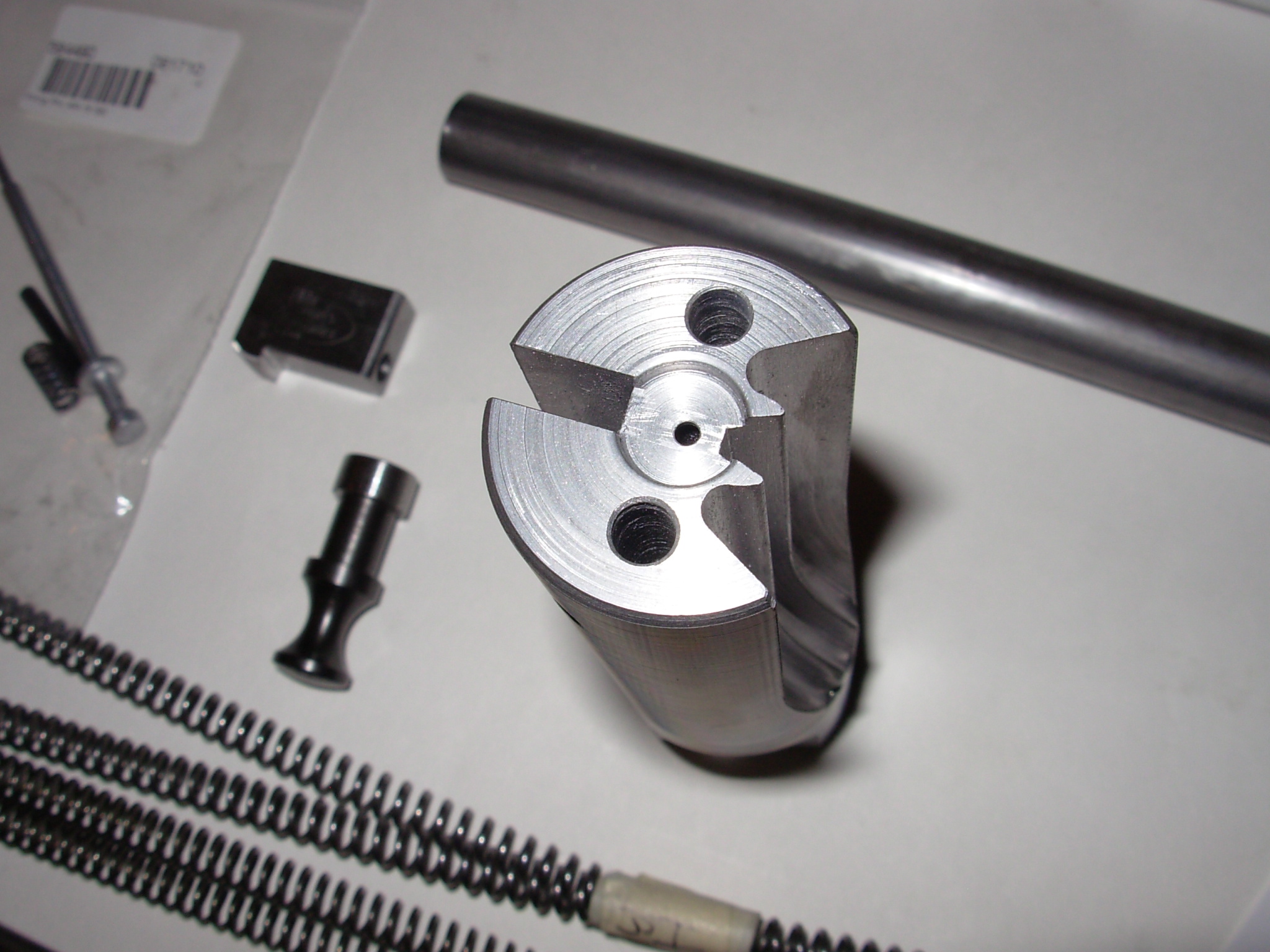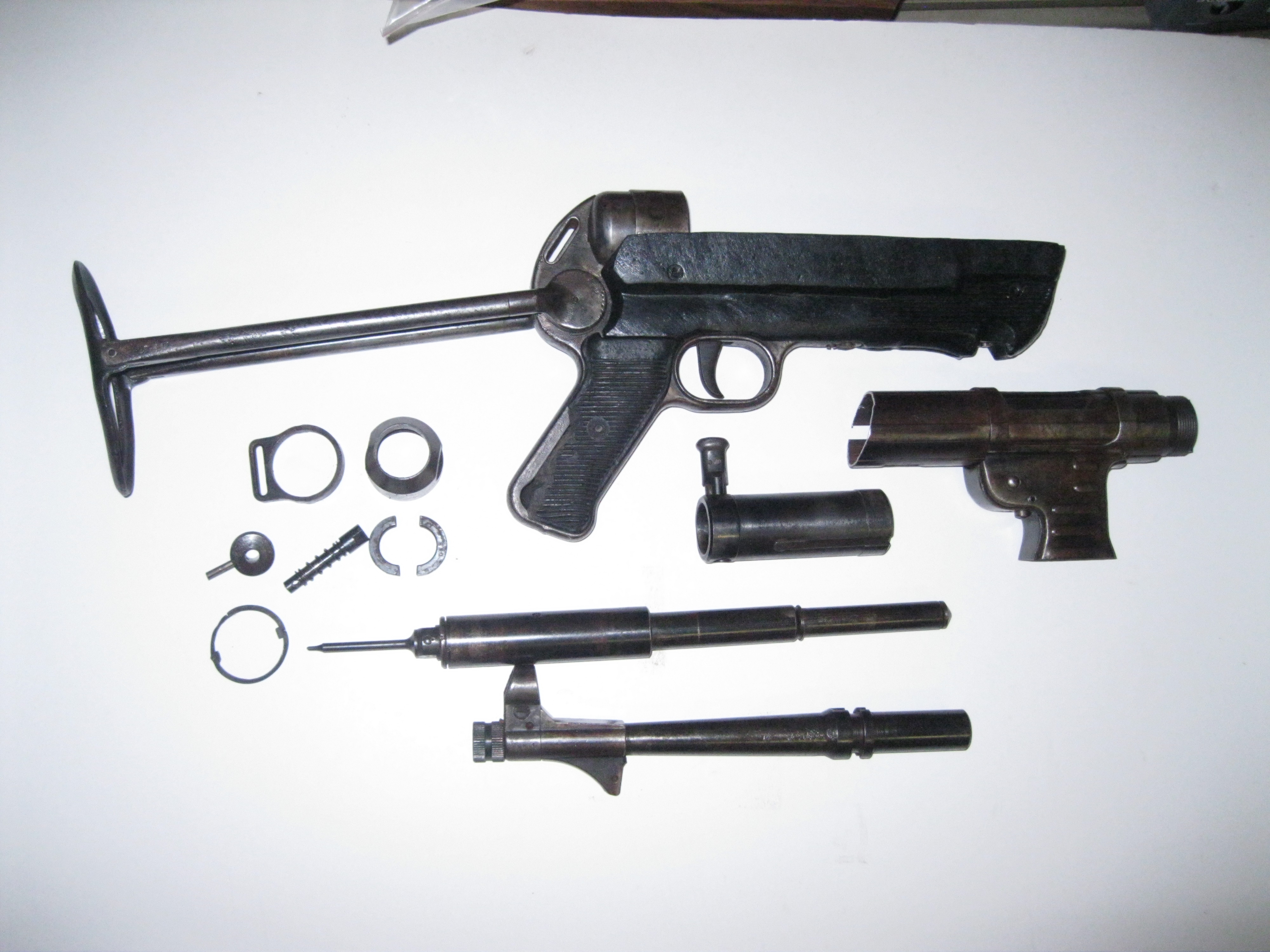

There is maker code cyf on the safety handle. Now so very difficult to find, those days are truly over. Bolt bears German Waffenamt and serial number. Condition is very good, with a bit of light rust in areas. This example comes with its extractor and push/pull cocking handle.

This means the extra mag is getting jammed in dirt and mud, and the soldier has to expose more of his person – easy target, get him! Slamming in a muddy spare mag into the weapon, instant jam…some type of cover to keep dirt out of the mag defeats the purpose as you waste time discarding it.Original Item: Only One Available. Taken from an MP 40 Parts Set that was built into a Display Gun and sold separately. Soldiers with sub guns need to get in close and get prone or they become dead soldiers. Taping mags together, sure, but the mag of the MP40 was already far too long for ease of use. Maybe they could have made the dual feed type magazine, like the 50 rounders they make for the AR15? Notice no troops in Afghan use this mag, (these mags probably vetoed by higher ups.) That’s the only solution and they never thought of it and tried it. So the first major variant of the design was this dual-mag system, hence it was called the MP40/I. There were changes made to the standard MP40 early in its production (new bolt handle design and ribbed mag housing), but these changes were never given a new designation. In official Wehrmacht equipment lists, they are called MP40/I. These guns are generally referred to as “MP40/II”, but this nomenclature is incorrect. Another view of the Belgian Army Museum example – note the two magazine release buttons on the back of the mag housing. The original ones were made by Erma and Steyr (manufacturing codes ayf and bnz respectively) in 1943. Very few survived the war, although it seems likely that counterfeits have been made, as the guns command extremely inflated prices compared to normal MP40s, and the modification is comparatively easy to do (I have heard that a few dual-mag housings were brought over to the US from Czechoslovakia or Yugoslavia after the war, which would make it very easy to make one of these). It simply didn’t offer enough advantages over normal guns in the army’s view. Ultimately (and fairly quickly), the experiment with this variation of the MP40 was cancelled. MP40/I bottom view (this gun is in the Belgian Army Museum) The sliding mechanism was also vulnerable to jamming from dirt or grime in a way that would never happen to a normal MP40. With two loaded magazines, the gun weighed in at just over 12 pounds, and much of that was up front making the gun awkward to handle. However, it had a number of downsides (as do most all really high capacity adaptations).
#BOLT MP 40 PLUS#
On the plus side, this system could be made with minimal changes to MP40 production, and it used any standard MP40 magazines. Note the lever on the front of the mag housings, which allowed the unit to slide left and right. This allowed the gun to be loaded and ready in case one was surprised while reloading, but only in extreme cases were both mags to be emptied in the gun.
#BOLT MP 40 FULL#
Official doctrine called for troops to slide the new mag into place when the first was empty, and then replace the empty mag with a full one, so a spare loaded mag was always available in reserve. The bolt would still have to be pulled back manually before firing, but given the use of military-style magazine pouches this was still definitely faster than reloading a standard MP40. Once one magazine was emptied, the shooter would just press a latch on the front of the housing and slide the unit laterally and inch or so, positioning the second loaded magazine in the path of the bolt. The pair of magazine wells was a sliding unit that could move left and right under the receiver. The design used a completely stock MP40 and replaced the magazine housing with a redesigned one which held two magazines side by side. The gun was intended for special operations troops who were judged to have a particularly pressing need for more ammo on hand to deal with ambushes and high-intensity close range firefights. If one mag is good, two must be better – right? Well, the German army took a rather unusual approach to this issue in 1942, when it introduced an experimental double-magazine version of the MP40. Whether it is drum mags, longer box mags, jungle clips to connect multiple mags together, or other gimmicks, more ammo is always the goal. From the first introduction of detachable magazines on firearms, people have been looking for ways to increase magazine capacity.


 0 kommentar(er)
0 kommentar(er)
